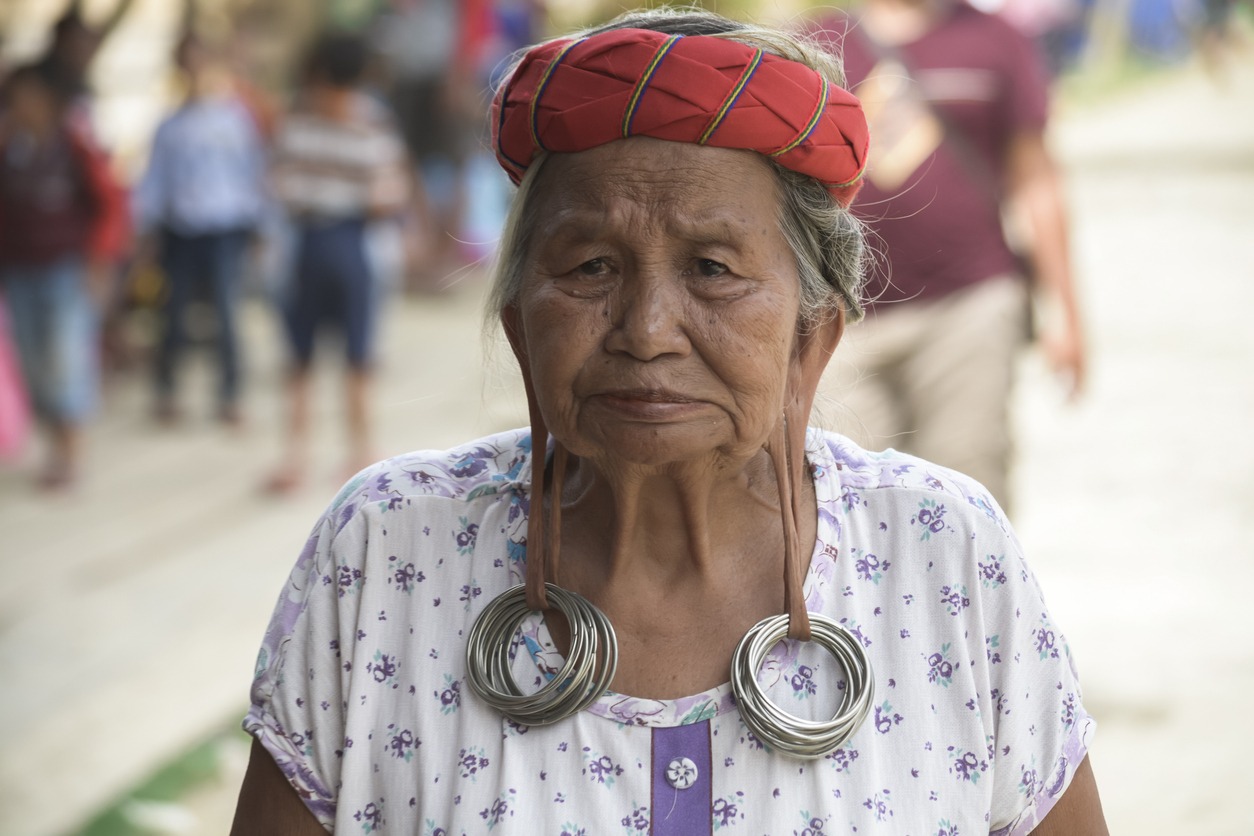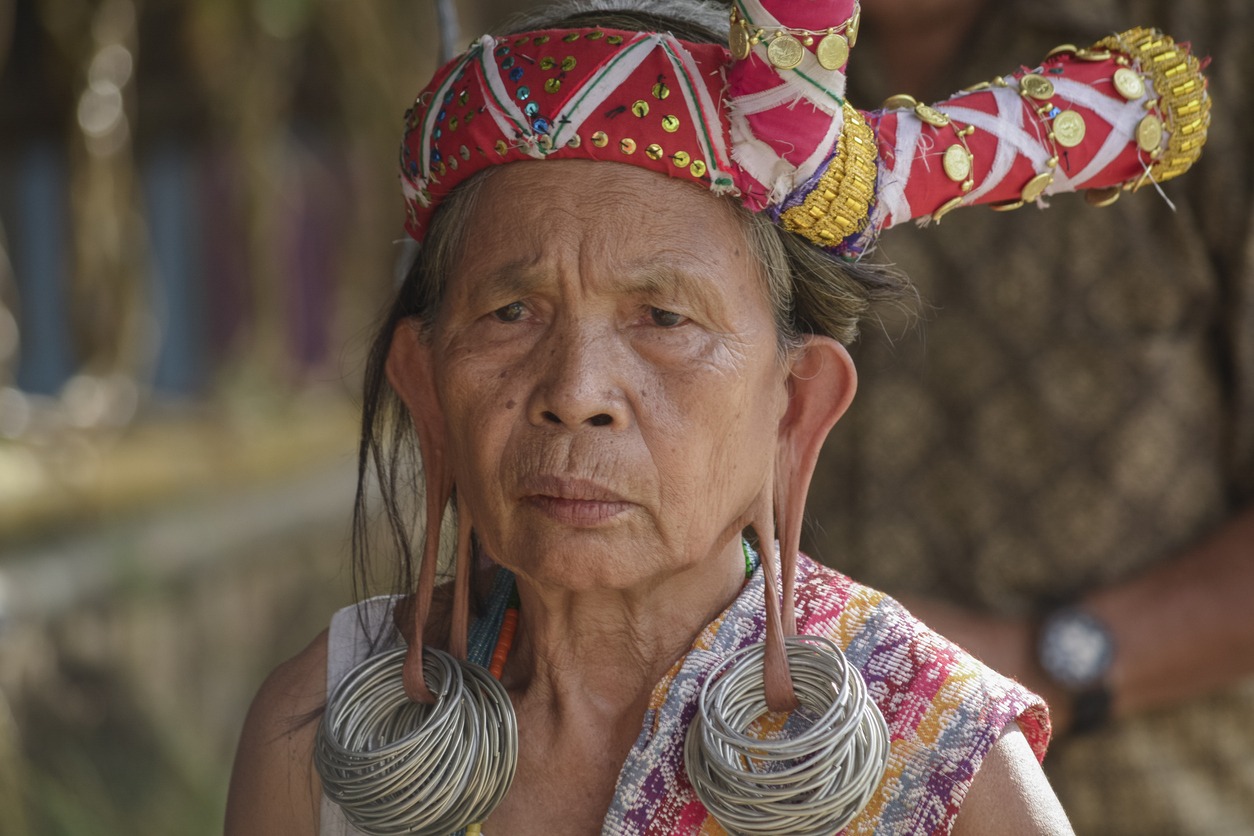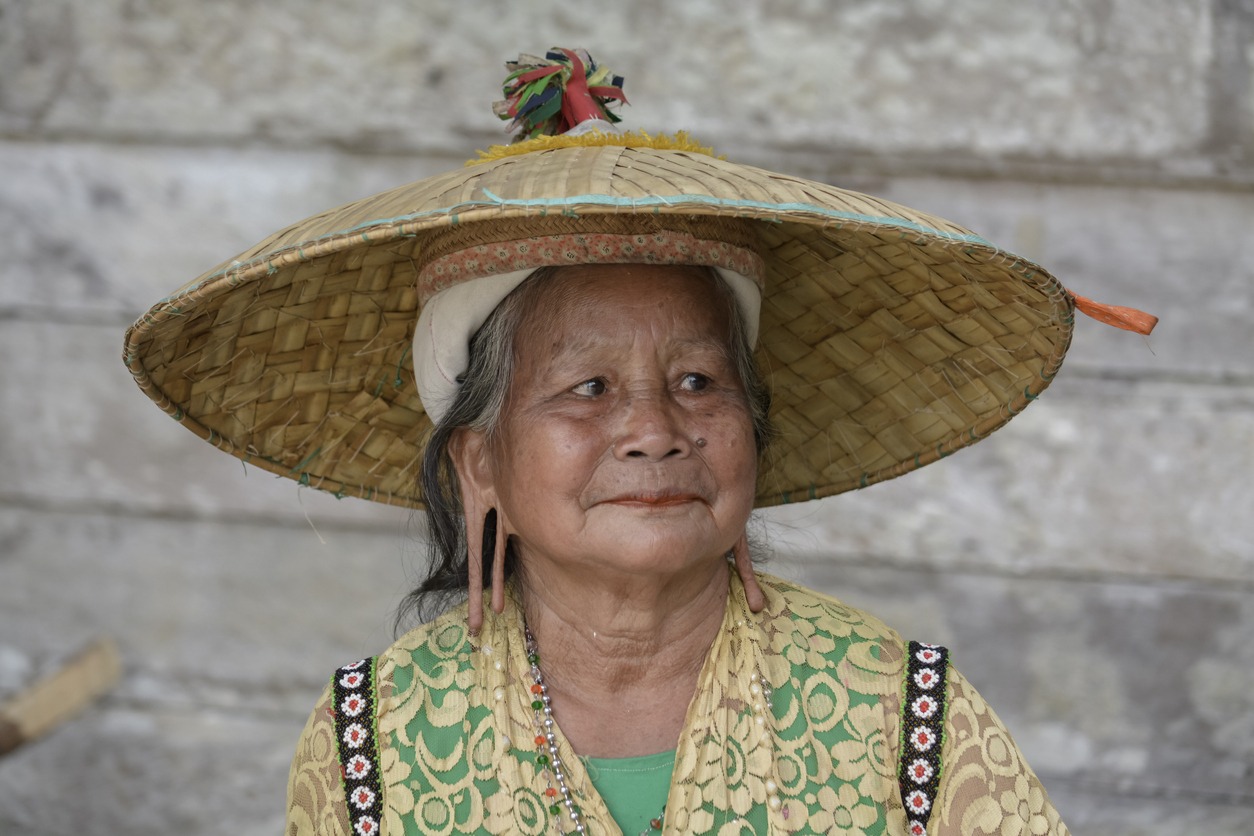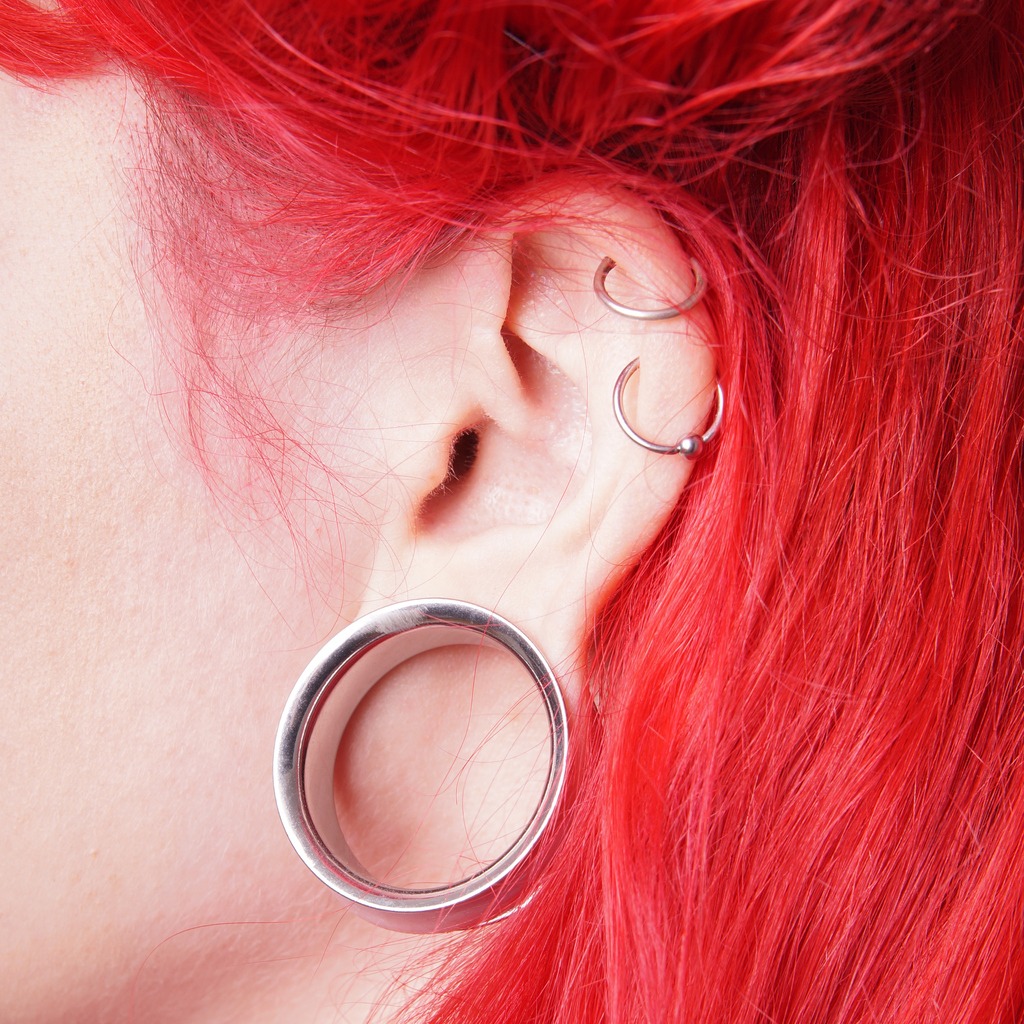In the lush rainforests of Borneo, home to a mosaic of indigenous tribes, the Dayak people maintain a rich tapestry of cultural traditions. Among these, one of the most visually striking is the practice of ear stretching. This age-old custom, deeply rooted in their heritage, is not just a unique aesthetic choice but a symbol woven into the very fabric of Dayak’s identity and beauty standards.
This article dives into the intriguing world of the Dayak tribes of Borneo, specifically exploring why ear stretching is revered as a standard of beauty. We will journey through the history, cultural significance, and contemporary perspectives of this practice. Understanding the reasons behind such a distinctive tradition gives us a glimpse into the complex and diverse world of tribal customs and beauty ideals.
Historical Context of Ear Stretching Among the Dayak
The practice of ear stretching among the Dayak tribes of Borneo traces back centuries and is deeply rooted in their history and folklore. It is believed to have originated as a physical expression of beauty, spirituality, and social status. In the early days, this practice was not merely a personal choice but a significant cultural ritual that marked various stages in a person’s life. The Dayaks, known for their close connection with nature and spiritual beliefs, saw ear stretching as a way to embody these values in their physical appearance.
Evolution of the Practice Over Time
Over the years, the tradition of ear stretching has seen both continuity and change. Initially, it was a widespread practice among both men and women, signifying different milestones such as the transition from adolescence to adulthood or marking the status of a warrior or a leader. As the Dayak society evolved, so did the meanings and practices associated with ear stretching. The size and style of the earpieces began to vary, often reflecting the individual’s social standing or specific tribe.
Connection with Other Dayak Traditions
Ear stretching did not exist in isolation but was part of a broader spectrum of body modification practices prevalent among the Dayak people. These included intricate tattooing, teeth filing, and various forms of adornment, each with its own cultural and symbolic significance. The common thread in these practices was the expression of beauty, identity, and the tribe’s connection to their ancestors and the spiritual world. Ear stretching, in this context, was more than a physical alteration; it was a deeply ingrained part of the Dayak way of life, intertwined with their rituals, beliefs, and social structure.
The Decline and Revival of the Tradition
In recent times, the practice of ear stretching among the Dayak has seen a decline, largely due to the influence of modernization and external cultural pressures. However, there is a growing interest in reviving and preserving this unique aspect of Dayak heritage, especially among the younger generation and cultural preservationists. This renewed interest is not only a nod to the past but also a reassertion of ethnic identity and pride in a rapidly globalizing world.
The historical journey of ear stretching in Dayak culture is a testament to the tribe’s resilience and dedication to their customs. Understanding this history is crucial in appreciating not just the physical aspect of ear stretching but its role as a living, breathing part of Dayak heritage.
Cultural Significance of Ear Stretching
The practice of ear stretching among the Dayak tribes of Borneo is much more than a physical modification; it’s a rich tapestry of meaning and tradition deeply woven into their cultural identity. Let us explore the various facets of ear stretching that highlight its significance in Dayak culture.
Symbolic Meanings of Ear Stretching
- Maturity and Rite of Passage: Traditionally, ear stretching often begins at a young age, marking the transition from childhood to adulthood. It’s a physical symbol of maturity and readiness to take on adult roles within the community.
- Social Status and Identity: The size and design of the earpieces can indicate a person’s social status. Larger, more elaborate earpieces are sometimes associated with higher status or specific roles within the tribe.
- Spiritual and Aesthetic Beliefs: Ear stretching is believed to enhance one’s beauty according to Dayak’s aesthetic ideals. It’s also thought to hold spiritual significance, connecting the wearer to ancestral spirits and the natural world.
Role in Dayak Beauty Standards and Aesthetics
Ear stretching is not an isolated practice but part of a holistic approach to beauty and adornment, which may include tattoos, traditional clothing, and other forms of body modification. In Dayak culture, stretched ears are often considered a hallmark of beauty and elegance, deeply ingrained in the community’s perception of attractiveness.
Ear Stretching in Ceremonial Events
Ear stretching can play a role in various Dayak rituals and ceremonies, marking significant life events or communal gatherings. Special earpieces are sometimes worn during these events, adding to the ritual’s significance and showcasing the community’s craftsmanship.
The cultural significance of ear stretching in Dayak society is multifaceted, representing a blend of historical tradition, social structure, and spiritual beliefs. It’s a practice that speaks volumes about the tribe’s values and their perception of beauty, standing as a testament to their rich cultural heritage.
The Process of Ear Stretching
Ear stretching, a significant cultural practice among the Dayak tribes of Borneo, involves a meticulous and gradual process. This practice, deeply embedded in tradition, is carried out with great care and respect for the cultural norms and rituals that have been passed down through generations.
- Initiation of Ear Stretching: The process often begins in childhood or early adolescence. This initiation age can vary depending on the specific customs of each Dayak subgroup. The first step is the piercing of the earlobes, which is usually done using a small needle or a traditional tool, ensuring minimal discomfort.
- Gradual Stretching Technique: After the initial piercing, the earlobes are gradually stretched over time. This is done by inserting progressively larger objects into the earlobes. Traditional materials, such as wood, bamboo, or bone, are commonly used for stretching. These materials are chosen for their natural and cultural significance.
- Cultural Guidelines and Practices: The process is often overseen by elders or experienced members of the community, ensuring it adheres to cultural norms. Proper care is taken to avoid infection or injury during the stretching process. This includes regular cleaning and gentle handling of the earlobes.
- Timeframe for Stretching: The entire process can take several years, as it’s important to allow the earlobes to heal and adjust between each stretching stage. The desired size of the stretch can vary, often influenced by personal choice and cultural expectations within the tribe.
The process of ear stretching among the Dayak is a deliberate and respectful practice, reflecting the tribe’s dedication to maintaining their cultural identity. It’s a journey that not only alters one’s physical appearance but also deeply connects the individual to their community and heritage.
Contemporary Perspectives and Practices
In recent times, the practice of ear stretching among the Dayak tribes of Borneo has navigated through a complex interplay of tradition and modernity. This section explores how contemporary influences have reshaped this age-old practice and the varied perspectives it holds today.
Modern Influences on Ear Stretching
With increased exposure to global cultures, the younger generations may view ear stretching differently, balancing traditional values with modern aesthetics. While some Dayak communities continue to uphold ear stretching as a vital cultural practice, others may view it as less central to their identity due to modern influences.
Younger Generation’s Perspectives
Among the younger Dayaks, there’s a range of attitudes towards ear stretching, from enthusiastic preservation to indifferent reception. Some may adapt the practice to suit contemporary lifestyles, opting for less pronounced ear stretching that aligns with both traditional and modern ideals.
Current Status of Ear Stretching
In certain areas, ear stretching continues robustly, integral to cultural celebrations and identity. In others, a decline has been seen, with fewer young people choosing to undergo the process. Cultural preservationists and community leaders often encourage the continuation of ear stretching, emphasizing its importance as a symbol of heritage and pride.
Revival and Cultural Pride
There’s a growing interest in cultural revival among some Dayak youth, who view ear stretching as a way to reconnect with and preserve their ancestral roots. Ear stretching, along with other traditional practices, is often featured in cultural festivals and tourism, helping to educate others about Dayak heritage.
The contemporary landscape of ear stretching among the Dayak reflects a community at the crossroads of tradition and change. While the practice evolves and adapts to modern times, it continues to hold significant cultural weight, symbolizing a rich history and a strong sense of identity among the Dayak people.
Challenges and Misconceptions
The practice of ear stretching within the Dayak tribes of Borneo, like many traditional customs, faces its share of challenges and misunderstandings in the modern world. Addressing these issues is crucial for a deeper appreciation and accurate representation of this unique cultural practice.
Challenges in Preserving the Tradition
- Impact of Modernization: As the Dayak communities encounter the forces of globalization and modernization, traditional practices like ear stretching face the risk of diminishing.
- Generational Shifts: With younger generations often drawn to global culture, there’s a challenge in transmitting traditional values and practices like ear stretching to them.
- Health and Safety Concerns: Modern health standards and lack of traditional knowledge can sometimes lead to safety concerns, impacting the practice’s continuation.
Misconceptions About Ear Stretching
- Stereotyping and Stigmatization: Ear stretching is sometimes misunderstood or stereotyped in popular media, leading to a skewed perception of this practice.
- Misinterpretation of Cultural Significance: Outsiders may view ear stretching merely as a body modification or fashion statement, overlooking its deep cultural and symbolic meanings.
- Overgeneralization of Practice: There’s a tendency to overgeneralize this practice as representative of all Dayak people, disregarding the diversity within different Dayak subgroups.
Addressing the Misunderstandings
- Cultural Education and Awareness: Educating both Dayaks and the broader public about the historical and cultural significance of ear stretching can help address misconceptions.
- Promotion of Cultural Heritage: Efforts to showcase Dayak culture in a respectful and accurate manner, such as through cultural festivals and exhibitions, can aid in dispelling stereotypes.
- Inclusion of Dayak Voices: Amplifying the voices and perspectives of the Dayak people in media and educational materials ensures a more authentic and respectful representation.
The practice of ear stretching among the Dayak tribes stands as a poignant reminder of the richness of cultural diversity. Overcoming the challenges and correcting misconceptions associated with it is not just important for the Dayak people but also contributes to the broader understanding and appreciation of unique cultural practices around the world.
Conclusion
In this exploration of the ear stretching practice among the Dayak tribes of Borneo, we’ve seen how a single cultural tradition can hold various meanings and evolve over time. Ear stretching is a practice that goes beyond physical appearance, reflecting the identity, beliefs, and heritage of the Dayak people. Today, as the Dayak community navigates the challenges of modernization and cultural misconceptions, the practice stands as a significant aspect of their cultural expression.
Understanding and respecting such traditions are vital in appreciating the diverse and rich cultures of our world. The story of ear stretching among the Dayak not only enlightens us about their unique customs but also encourages a broader appreciation of the varied ways beauty and identity are expressed across different cultures.



